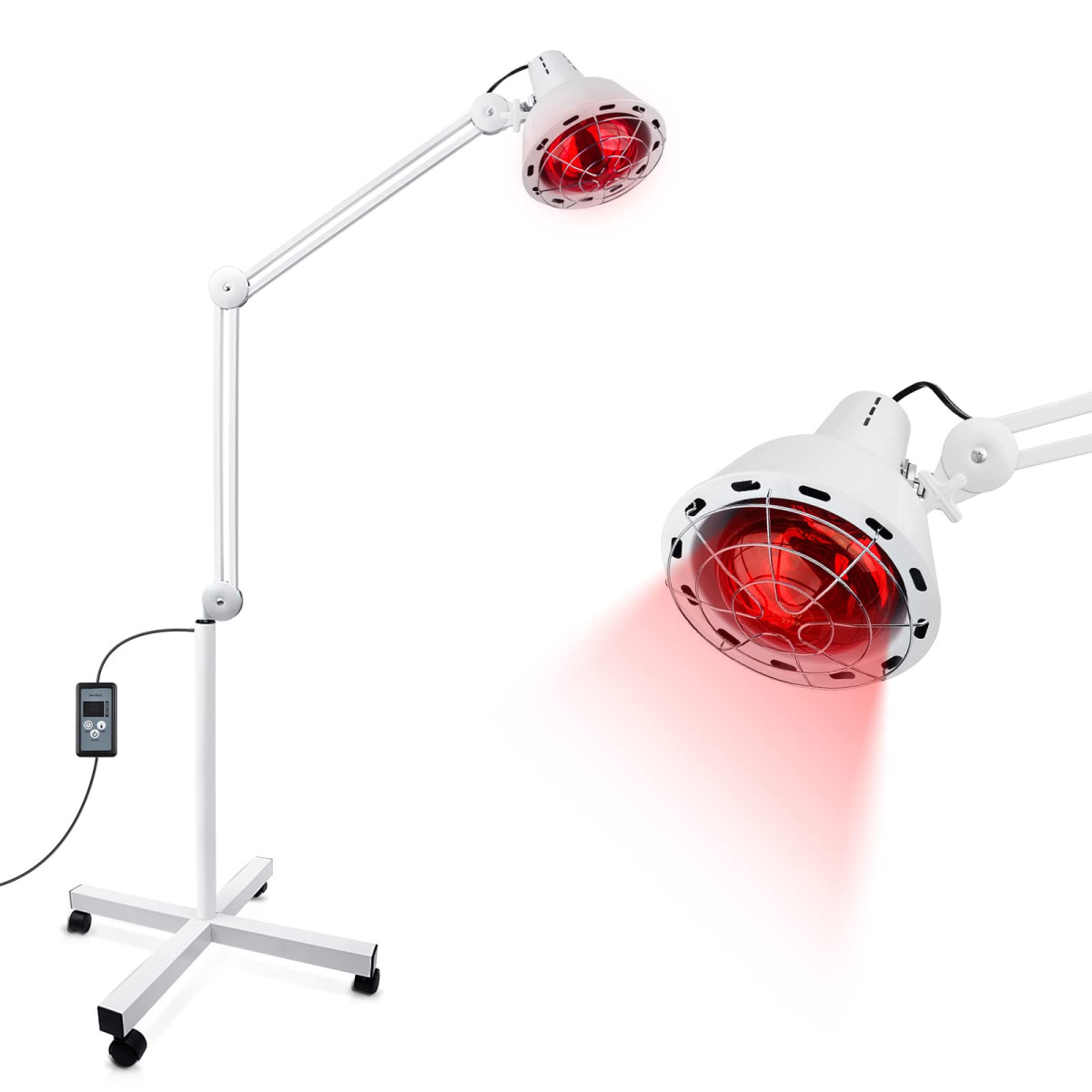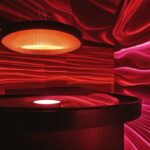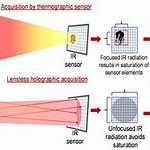When it comes to providing warmth and light for our homes, one of the most popular and efficient solutions is the heat lamp. But is a heat lamp infrared? If you’re looking for answers to this question and more, then you’ve come to the right place. In this article, we’ll explain exactly what infrared is and how it relates to a heat lamp, so you can make an informed decision when it comes to heating your home.
Yes, a heat lamp is infrared. Infrared heat lamps emit electromagnetic radiation in the infrared range, which is invisible to the human eye. This type of radiation is often used for heating purposes. Infrared heat lamps are often used in industrial, commercial, and medical applications.

Contents
What is an Infrared Heat Lamp?
An infrared heat lamp is a type of lamp that emits infrared radiation for heat and light. The lamp’s light can be visible or invisible, depending on its wattage. Its heat is created by the radiation given off by the lamp, which is then absorbed by the surrounding atmosphere. Infrared heat lamps are commonly used in industrial, medical, and agricultural applications.
Infrared radiation is a type of electromagnetic radiation with a wavelength longer than visible light. It is invisible to the human eye, but can be detected by infrared sensors. Heat lamps that emit infrared radiation are able to generate heat without producing visible light, making them ideal for applications where heat is needed without light.
How Does an Infrared Heat Lamp Work?
Infrared heat lamps generate heat by emitting infrared radiation. The lamp’s filament is heated by an electric current, which causes it to emit infrared radiation. The radiation is then absorbed by the surrounding environment, raising the temperature.
Infrared heat lamps are often used in industrial settings to heat large areas quickly. They are also used in medical applications to provide localized heat therapy, such as to decrease pain or increase circulation. In agricultural applications, infrared heat lamps are used to warm baby chicks or other animals.
What are the Benefits of an Infrared Heat Lamp?
Infrared heat lamps offer several advantages over other heating sources. They generate heat quickly and don’t require a lot of energy. They are also more efficient than traditional heaters, as they don’t produce any harmful by-products. Finally, infrared heat lamps are safe to use, as the infrared radiation they emit is harmless to humans.
Is a Heat Lamp Infrared?
Yes, a heat lamp is infrared. Heat lamps are designed to emit infrared radiation, which is then absorbed by the surrounding environment. This infrared radiation is invisible to the human eye, but can be detected by infrared sensors. Heat lamps are often used in industrial, medical, and agricultural applications to generate heat quickly and efficiently.
What are the Different Types of Infrared Heat Lamps?
There are three main types of infrared heat lamps: short-wave, medium-wave, and long-wave. Short-wave infrared heat lamps emit radiation with a wavelength between 0.75 and 2.5 micrometers. Medium-wave infrared heat lamps emit radiation with a wavelength between 2.5 and 10 micrometers, while long-wave infrared heat lamps emit radiation with a wavelength between 10 and 1000 micrometers.
How are Infrared Heat Lamps Used?
Infrared heat lamps are used in a variety of applications, from industrial settings to medical and agricultural applications. They are used to heat large areas quickly and efficiently, and can also be used for localized heat therapy. In agricultural settings, infrared heat lamps are often used to warm baby chicks or other animals.
Top 6 Frequently Asked Questions
Q1: What is a heat lamp?
A heat lamp is a device that emits infrared radiation (IR) in order to generate heat. They are commonly used in outdoor or indoor settings to provide localized warmth, such as in food warming and animal husbandry applications. Heat lamps are also used in medical and industrial settings to provide localized heat to certain body parts or machinery.
Q2: How does a heat lamp work?
A heat lamp works by generating infrared radiation (IR) in order to generate heat. The lamp produces radiation in the form of electromagnetic waves, which is absorbed by the objects in the surrounding area. This absorbed energy is converted into heat, which then transfers to the objects in the vicinity of the heat lamp.
Q3: Is a heat lamp infrared?
Yes, a heat lamp is infrared. Infrared radiation (IR) is the type of electromagnetic radiation that is emitted by the heat lamp. This type of radiation is invisible to the naked eye, but can be felt as heat when it is absorbed by objects in the surrounding area.
Q4: What are the benefits of using a heat lamp?
The main benefit of a heat lamp is that it can provide localized heat in a very efficient manner. Heat lamps are great for providing warmth in outdoor settings, or for providing localized heating in food warming or animal husbandry applications. Additionally, they can be used in medical and industrial settings to provide localized heat, which can be beneficial for certain treatments or processes.
Q5: Are there any safety precautions to consider when using a heat lamp?
Yes, there are several safety precautions to consider when using a heat lamp. First, it is important to keep the heat lamp at a safe distance from any objects or people in the surrounding area. Additionally, it is important to make sure that the heat lamp is properly secured and secured to a stable surface. Lastly, it is important to make sure that the heat lamp is not left on for extended periods of time, as this can be a fire hazard.
Q6: How long does a heat lamp typically last?
The average lifespan of a heat lamp is usually between 2,000 and 10,000 hours. The exact lifespan of a heat lamp will depend on the wattage of the lamp, as well as the frequency of use. Additionally, the lifespan of the bulb may be reduced if the lamp is left on for extended periods of time.
The Secret Reason Infrared Heat Can Heal Neck, Back, Shoulder, Hip Pain & More!
In conclusion, the answer to the question, “Is a heat lamp infrared?” is yes. Heat lamps are a type of infrared light, which emit longer wavelengths than other types of light. These longer wavelengths are easily absorbed by the human skin, creating a warming sensation. Heat lamps are often used in areas where infrared light is needed, such as in greenhouses or outdoor patios. For these reasons, heat lamps are a great choice for those who are looking to provide infrared light in an area.








